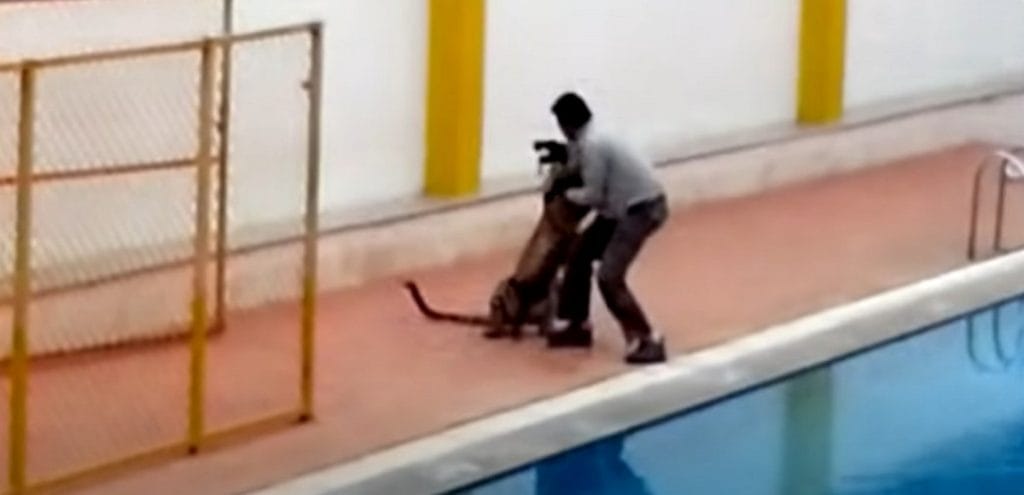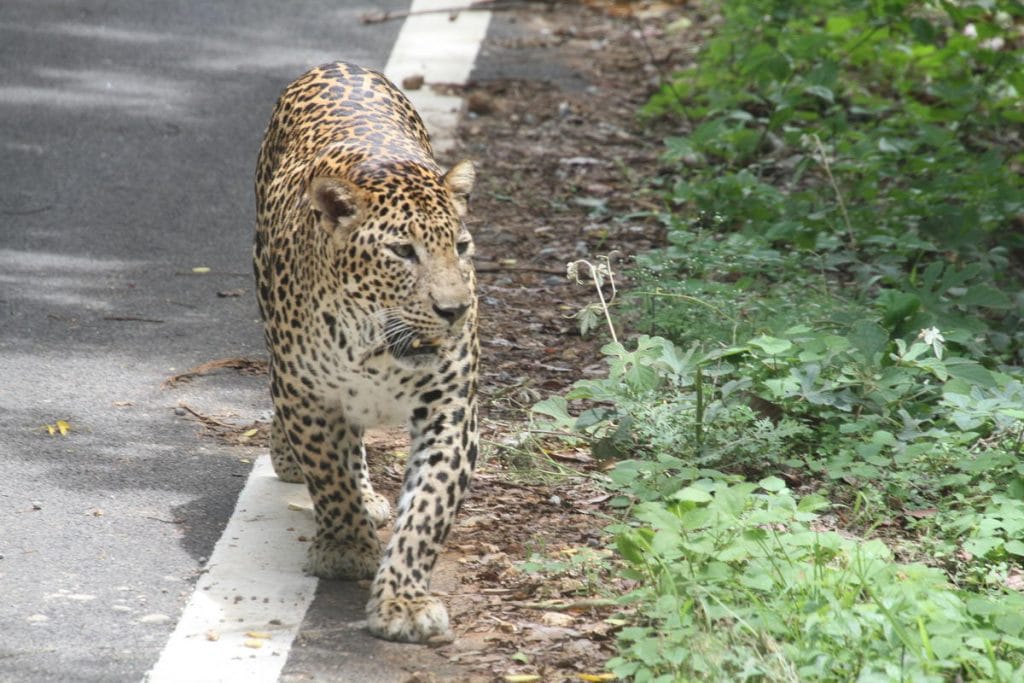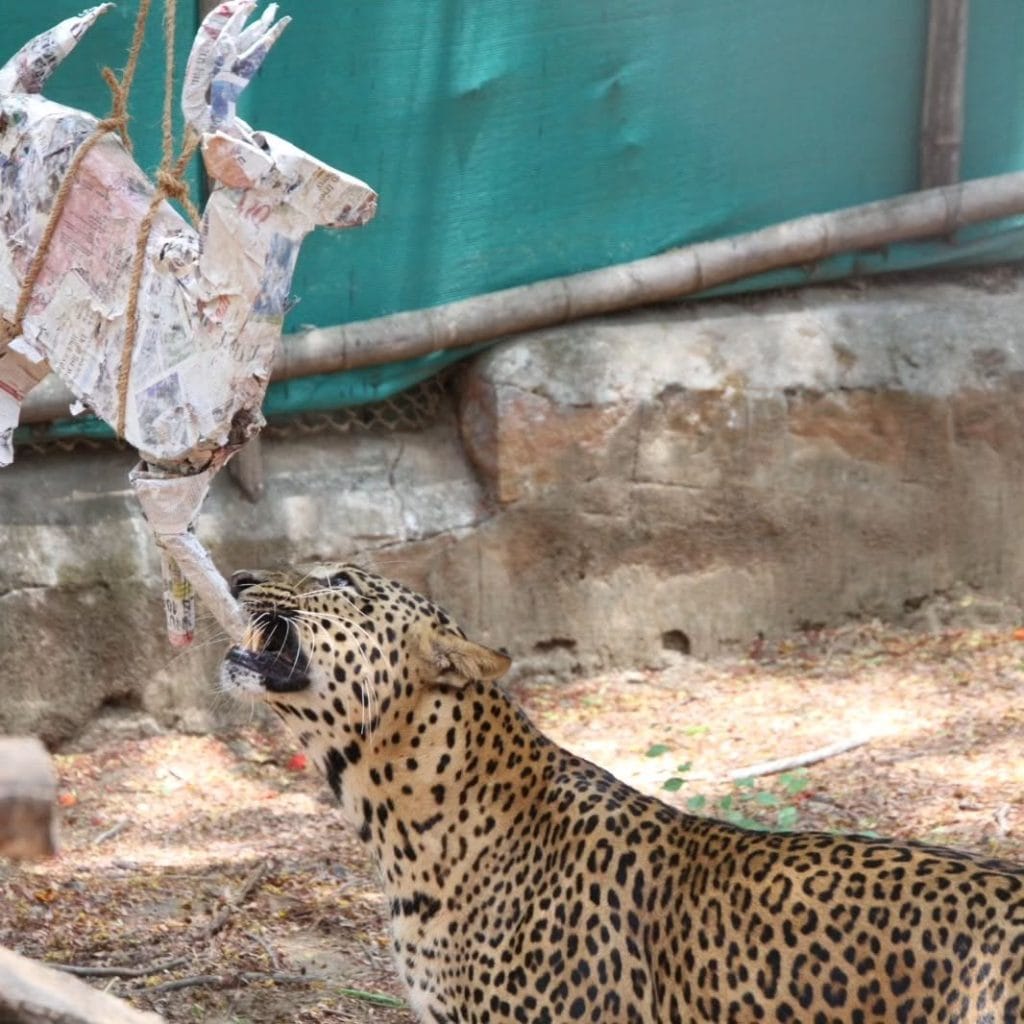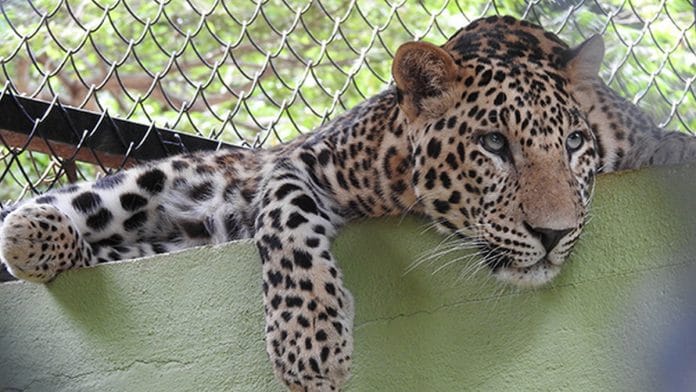Bengaluru: A one-and-a-half-month-old leopard cub at Bengaluru’s Bannerghatta Rescue Centre paces nervously in his 3x3m enclosure, the size of a small shed. He’s the latest addition to a leap of 64 leopards that now fills the centre.
But Bannerghatta Rescue Centre was not built to hold so many leopards, whose natural territories can cover more than 40 square kilometres in the wild. Soon, there won’t be any space left for these magnificent creatures.
For the first time in 25 years since the dedicated wildlife rescue and rehabilitation centre opened in 1999, the number of leopards in its care is exceeding its capacity. Now, officials are worried that they will run out of space. In 2020-21, only eight leopards were captured and brought in. That number nearly doubled to 15 in 2022-23. The following year, 23 new leopards were brought to the centre. Most were captured from areas around Bengaluru, Mysuru, and Tumakuru.
To tackle this crisis, the rescue centre is scrambling to hire more manpower, including veterinarians and biologists. There’s a financial strain too. Feeding and basic care alone cost around Rs 1,200 a day per leopard. And some, labelled ‘known troublemakers’ for attacking livestock and cubs, are likely to spend the rest of their life in captivity.
Lately, there have been rising complaints about leopards repeatedly venturing into human habitation and increasing human-wildlife conflicts. So, rescue centres are pressured to hold them in captivity
-Dr Sunil Panwar, Chief Conservator of Forests at the Zoo Authority of Karnataka
Surya Sen, executive director of Bannerghatta Biological Park, of which the rescue centre is a part, blames the rise not so much on man-animal conflict as on social media, which fuels fear and panic.
“With social media and access to phones, everyone goes into panic mode if a leopard is spotted in Bengaluru’s city limits. This forces the forest department to capture the ‘rogue animal’ even when there’s no dangerous confrontation,” said Sen.
Sometimes, a mere sighting is enough to send everyone into a tizzy, bringing back memories of 2016 when a leopard made itself comfortable in the pool area of a private school on the outskirts of the city. A week after its capture, that male leopard also escaped from its enclosure in Bannerghatta.

With an estimated 1,879 leopards, Karnataka has the third-largest population of these elusive big cats in India, behind only Madhya Pradesh and Maharashtra. But nearly a hundred of them languish in captivity across rescue centres and zoos in the state, according to forest department officials.
Not all of them are “dangerous predators” or the “enemy”, said Joseph Hoover, a wildlife activist and former State Board for Wildlife member.
In fact, leopards have lived across the districts of Bengaluru Urban and Rural, Tumkur, and Mysuru, often in proximity to people, since time immemorial. But now, that peaceful coexistence is breaking down. From small flats on the city outskirts to multi-storeyed offices, CCTV cameras are everywhere, creating the illusion that these once-hidden creatures are appearing more frequently than ever.
“Growing urbanisation, increasing mining and blasting in forests have forced leopards to venture out into towns. It’s us humans who have to learn to coexist with them. If we don’t accept this, biodiversity as we know it will collapse,” said Hoover.
Also Read: ‘Leopard Trail’ is Gurugram’s wildest hangout. Party animals are taking over Aravallis
City vs leopards
Two months ago, a lone leopard emerged from the dense Turahalli Forest. The area was part of its territory, given that the forest lies just a few kilometres from BM Kaval and UM Kaval Reserves. But a local resident spotted the creature, shared images on WhatsApp, and people immediately banded together to burst firecrackers and scare it away—before forest officials could even arrive at the spot.
“Human settlements have been built around the forests where the leopards have naturally been living for decades,” said Aishwarya KS, a wildlife biologist at Bannerghatta Biological Park.
Usually, when a leopard is captured in an urban area, Aishwarya’s team assesses its health, microchips it, and releases it back into the wild. But that’s changed. Now, residents call their local MLA and insist that the animal be trapped and removed, she said.

The leopard that entered the Bengaluru school attacked two people, but only after the place was turned into a media circus. Cameras and bright lights were trained on the animal throughout the rescue operation.
A similar scene played out in 2018 when a leopard ‘barged’ into a house in Tumakuru—forest officials had a tough time keeping onlookers, cameras and influencers with phones away. A woman and her daughter-in-law were trapped in a bathroom for nearly six hours before fire and emergency services rescued them. More recently, on 31 December 2024, Infosys instructed all employees to work from home after a leopard was spotted in the underground parking area of its Mysuru campus. Ten additional camera traps were installed to help trap the animal.
Residents’ Welfare Associations, schools, and campuses have taken to installing CCTV cameras and traps—not as a safeguard against thieves, but against leopards. But according to Bannerghatta Park officials, not every sighting should end with the animal being captured and caged.
“We have raised this issue with the forest department and urged them to be proactive in their response instead of reactive,” Aishwarya said.

Invariably the captured leopards are shifted to Bannerghatta. While there is another rescue centre at Koorgalli in Mysuru, leopards captured in and around Bengaluru are usually brought to Bannerghatta because of its larger size.
“We try not to hold leopards captive for too long. Upon examination, if they are fit, they are released back into the forests. But lately, there have been rising complaints about leopards repeatedly venturing into human habitation and increasing human-wildlife conflicts. So, rescue centres are pressured to hold them in captivity,” said Dr Sunil Panwar, Chief Conservator of Forests at the Zoo Authority of Karnataka, which manages the Bannerghatta and Koorgalli rescue centres.
It is easy to find more land and buildings for rescue centres but what about training people to handle the animal for its whole life? We need more financial support for that
-Surya Sen, executive director, Bannerghatta Biological Park
Encroachments—both farm and residential areas—have led to a rise in human-animal conflict. Between 2018 and 2022, Karnataka recorded 23 human deaths due to leopard attacks and over 1,200 domestic animal losses, according to the Union Government’s ‘The Leopard Status in India 2022’ report. In contrast, between 2013 and 2014, only three human deaths were recorded.
With conflict rising, the government is increasingly treating translocation or permanent captivity as the only solution. And this is putting a strain on the Bannerghatta Rescue Centre’s limited resources.
For 2023-24, the state budget allocated nearly Rs 85 crore to the park, up from Rs 53 crore the previous year, according to the park’s annual reports. But park officials argue that funding must keep pace with the rising number of animals being brought in.
To sustain its operations, Bannerghatta Biological Park has introduced several initiatives over the years, including a single-day feeding and adoption programme. Citizens can ‘adopt’ and then visit animals like the Asiatic elephant, Bengal tiger, sloth bear, Indian grey wolf, and striped hyena, with the money going toward food, maintenance, and veterinary healthcare expenses.
“We get very minimal funding from the government for these facilities. It is easy to find more land and buildings for rescue centres but what about training people to handle the animal for its whole life? We need more financial support for that,” said Sen.
Trapped and stressed
At Bannerghatta Biological Park, a team of vets and biologists in camouflage uniforms moves quietly, trying to blend into the dense tree canopies to avoid disturbing the big cats.
“Capturing these animals and keeping them in rescue centres will help scientists study their behaviour at a time when conflicts are rising. But taking leopards out of their natural environment is like taking their life away and curtailing their freedom,” said Ramesh Belagere, wildlife activist and managing trustee of the Foundation for Ecology and Education Development (FEED).
All 64 leopards at the Bannerghatta centre are currently housed in 3x3m enclosures, surrounded by dry deciduous and tropical thorn shrubs. The rescue centre has 102 such enclosures, with leopards placed based on compatibility—some live alone, while others share an enclosure. All leopards are placed in an area called the ‘L block’, right opposite the ‘T block’ for tigers.

The centre tries to replicate the leopard’s natural habitat. And everyone is on constant alert for signs of stress. A 2019 study at Delhi’s National Zoological Park documented a leopard moving with mechanical precision, stepping in an identical rhythm with every turn in its cage. It paced repeatedly along the same barren path. To a layperson, it might not seem alarming, but studies show these actions—known as stereotypic behaviour—are indicators of severe stress.
In one such study, researcher Janice Vaz and others observed that 62 per cent of leopards in six Indian zoos—Pune, Thiruvananthapuram, Thrissur, Chennai, and Delhi—displayed stereotypic behaviours between April 2014 and March 2015.
“Leopards in enclosures with lower tree cover and absence of stones depicted stereotypic behaviour—repetitive walk or trot, head rotation, chewing paws and snapping,” the study said.

Vaz, who is now completing her PhD in animal behaviour at Western Sydney University, recalled an 11-month-old leopard cub she encountered during her research at Chennai zoo.
“She was born in the zoo to parents who were caught from the wild. She was a very playful creature, but her enclosure was too small. So, she would sit in a place and move her neck in a particular angle continuously from one direction to another—this was her stereotypic behaviour,” Vaz told ThePrint.
Leopards under extreme stress also tend to show aggression. Aishwarya recalled how an old leopard at the rescue centre became agitated and started chewing its paws—a reaction to constant contact with humans. This kind of aggression is also common in animals with injuries or health issues.
“The blame is then shifted to the animal if it becomes violent under stress. How is that fair?” said Belagere.
Also Read: 20 more cheetahs to be brought from South Africa identified; 17,000 sq km corridor on the anvil
Translocation to coexistence
In 2023, the Karnataka Forest Department announced that it was putting an end to translocating captured leopards. Moving a leopard from its territory to unfamiliar land can make it more aggressive and lead to more conflict with humans.
But forest officials admit that it’s still being practised.
“When we capture leopards from conflict areas, we can’t release them back in the same place. So we release them into deeper forest areas. But they tend to come back,” said Subhash Malkhede, Principal Chief Conservator of Forests and Chief Wildlife Warden.
Leopards, like other big cats, have remarkable homing instincts.
“They will traverse through densely populated rural or semi-urban landscapes to return to their original territories,” said Vidya Athreya, a Pune-based wildlife biologist, in her study on radio-collared leopards in agricultural landscapes of Maharashtra. And that’s where the risk of it attacking a human or preying on livestock is particularly high.
The process of translocating can be very stressful for leopards. In most cases, leopards do not get the same importance as tigers. They are just dumped and whether they are adapting to the new place is not followed through
Sanjay Gubbi, wildlife biologist
Athreya’s research showed that leopards lived in densely populated areas in Junnar, Pune, with relatively few attacks on people—until translocations began. In the eight years between 1993 and 2001, 33 leopard attacks on humans were reported. But during just three years of the translocation programme, the number jumped to 44 attacks.
In Karnataka, 268 leopards were translocated between 2009 and 2016, with a few hundred moved in later years. But it has failed to reduce conflict, according to wildlife biologist Sanjay Gubbi. He tracked the leopards till 2016 and his findings were published in the Journal of International Wildlife, Law & Policy in 2020.
The solution, experts say, is for conflict to transition into coexistence, which cities like Mumbai have managed to achieve to some extent.

“The process of translocating can be very stressful for leopards. In most cases, leopards do not get the same importance as tigers. They are just dumped and whether they are adapting to the new place is not followed through,” said Gubbi. Leopards that have attacked humans must be taken into captivity, but, he pointed out, it is not a one-size-fits-all solution.
Maharashtra’s conservation efforts have earned praise in wildlife circles. The Sanjay Gandhi National Park (SGNP) near Mumbai has the highest density of leopards in India—alongside vast residential complexes. While encounters between leopards and humans near the park were extensively reported before 2011, the forest department changed its approach soon after. Instead of trapping leopards, they started awareness campaigns with local residents, activists, and park authorities.
At Bannerghatta, officials have started adopting a similar approach. In 2024, they launched South India’s first and the country’s largest leopard safari. Tourists are allowed to visit, learn about growing human-animal conflicts, and understand ways to protect these animals.
Priced at Rs 350 for adults and Rs 200 for children, the leopard safari has quickly become a visitor favourite. Spread across 20 hectares (49.5 acres) of deciduous forest, it hosts 19 leopards for onlookers to spot. On any given day, at least 50-60 visitors are booked in.
“The safari is in an open area made up of a natural rocky and semi-deciduous forest terrain. This way, the leopards will not be stressed and humans can learn to start coexisting,” Aishwarya said.
Back in its cage, the tiny leopard cub runs to Savitri Amma, his caretaker. She picks him up, massages his limbs, and kisses his head as he squeals. For now, he is safe—but in all likelihood, he will be a permanent resident here until he dies.
(Edited by Asavari Singh)






